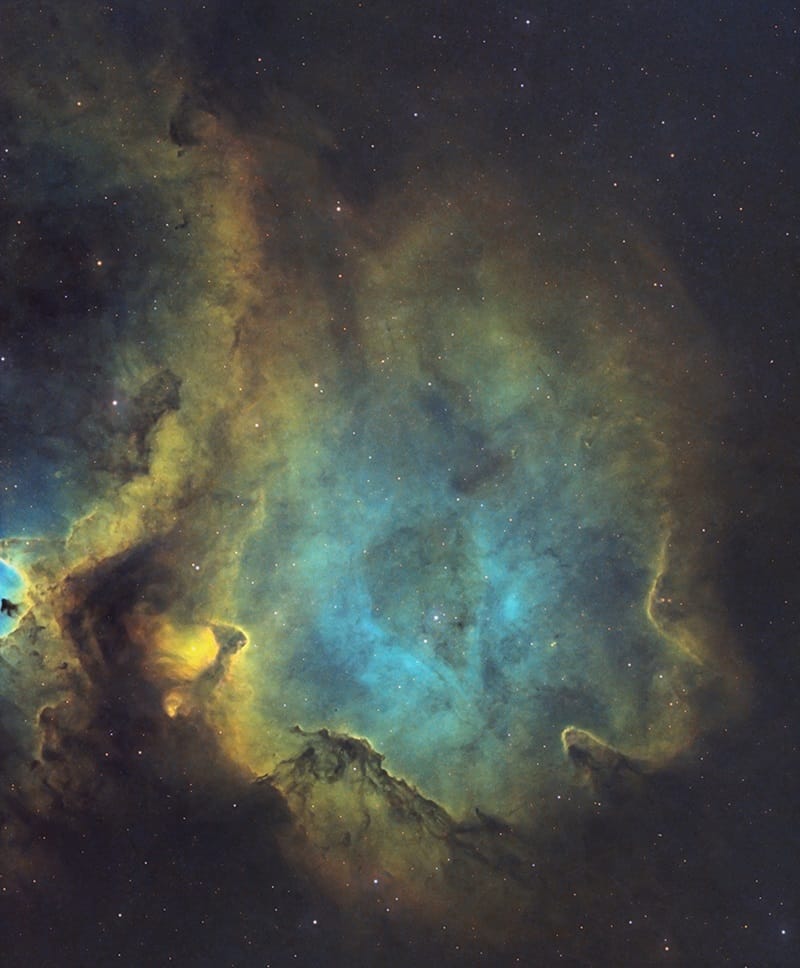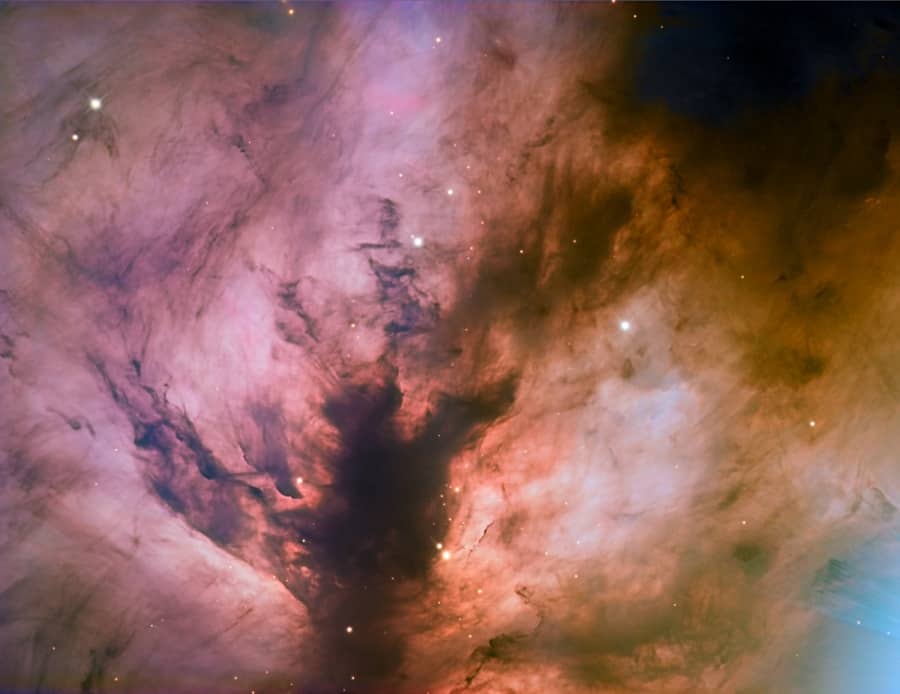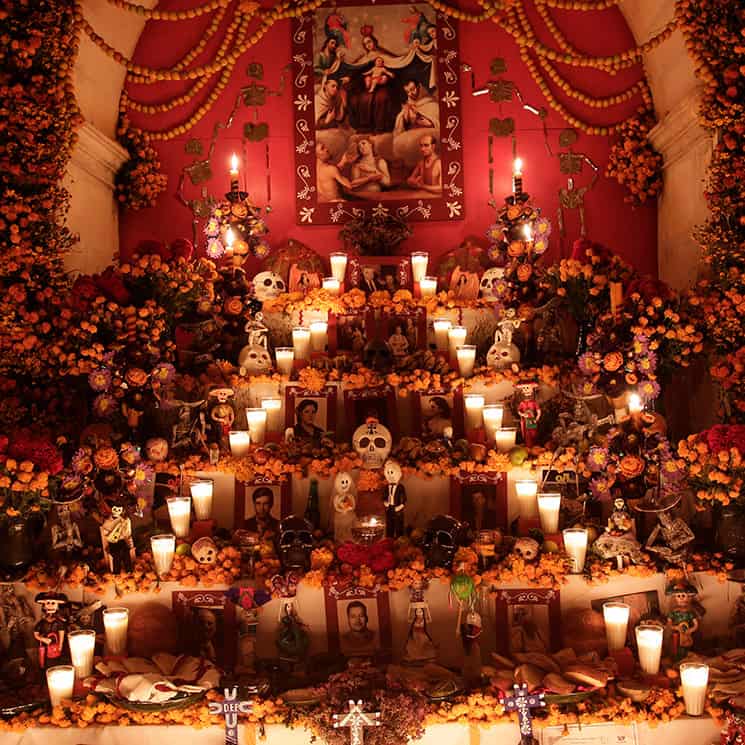Blog
Antonio Ruiz Soler (4 November 1921, Seville – 6 February 1996, Madrid), was a Spanish flamenco dancer, choreographer and dance director. He was professionally known as Antonio or Antonio el Bailarín (“Antonio the dancer”). With Rosario (Florence Pérez Padilla) he had a partnership which lasted from 1928 until 1952 and which became world-famous. They were billed as Rosario y Antonio.
During appearances in the United States he danced in Ravel’s “Boléro” in New York City and appeared in several Hollywood movies, including “Ziegfeld Girl” (1941), “Hollywood Canteen” (1944) and “Honeymoon” (1947).
In 1953 he formed his own Spanish ballet company, Antonio y los Ballets de Madrid, and Rosario also formed a company, partnered by Iglesias. Antonio choreographed many works in Spanish and classical style; several were taken up by other companies.
more...Lawrence Benjamin Bunker (November 4, 1928 – March 8, 2005) was an American jazz drummer, vibraphonist, and percussionist. A member of the Bill Evans Trio in the mid-1960s, he also played timpani with the Los Angeles Philharmonic orchestra. Born in Long Beach, California, Bunker was a central figure on the West Coast jazz scene, one of the relatively few who actually were from the region. In the 1950s and 1960s he appeared at Howard Rumsey‘s Lighthouse in Hermosa Beach, and performed with Shorty Rogers and His Giants and others. At first he played primarily drums, but increasingly he focused on vibraphone and was later highly regarded for his playing of timpani and various percussion instruments.
A dependable and in-demand studio drummer and vibist, Bunker achieved particular distinction by recording with Billie Holiday, Ella Fitzgerald, Peggy Lee, Diana Krall, and many other jazz greats. In 1952, he was the drummer in one of Art Pepper‘s first groups. In 1953 and 1954, Bunker played drums in some of the earliest of Gerry Mulligan‘s groups. From 1963 to 1965, he was, intermittently, the drummer in the Bill Evans trio. His work in movie soundtracks spanned over fifty years, from Stalag 17 (1953) and Glengarry Glen Ross (1992) to The Incredibles (2004), and included soundtracks by John Williams, Henry Mancini, Quincy Jones, Miklós Rózsa, Jerry Goldsmith, Johnny Mandel, Lalo Schifrin and many other composers.
Bunker died of complications of a stroke in Los Angeles at age 76.
https://www.youtube.com/watch?v=csGnvbJCQKU
more...Carlos Valdés (November 4, 1926 – December 4, 2007), better known as Patato, was a Cuban-born American conga player. In 1954 he emigrated from La Habana to New York City where he continued his prolific career as a sideman for several jazz and Latin music ensembles, and occasionally as a bandleader. He invented and patented the tunable conga drum which revolutionized the use of the instrument in the US. Tito Puente once called him “the greatest conguero alive today”.
Like most Cuban musicians, Carlos Valdés had several nicknames throughout his artistic career. Early on he was known as “El Toro” (The Bull) as a young dancer and boxer. In school he was known as “Patato” (Potato) due to his short stature; more disrespectfully he was known as “Remache” and “Tampón de bañera” around his neighbourhood. While playing alongside Armando Peraza in Havana’s Zombie Club, he was known as “El Zombie”, “Zombito” or “Pequeño Zombie” (Little Zombie). Due to his dancing style he was known as “Pingüino” (Penguin). Nonetheless, “Patato” was the name that stuck and he carried this pseudonym to the US, where he was often miscredited as “Potato Valdez”. Carlos Valdés was born in the neighbourhood of Los Sitios in La Habana on November 4, 1926. His father, Carlos Valdés Brito, was a tres player who was part of the seminal coro de clave Los Apaches, and author of the son “Maldita timidez” recorded by Sexteto Habanero. The rest of his family included many other musicians and santeros; his cousin was the singer Francisco Felloveaka “El Gran Fellove”. Carlos soon followed his father footsteps, learning to play the tres and a wide variety of percussion instruments, including the marímbula, the botija, the shekere, the tambourine, the cajón and the double bass. He became a member of the comparsa Las sultanas in which he played the congas (tumbadoras). He became a master of the instrument at a young age, playing alongside other greats such as Mongo Santamaría, Cándido Camero, Julito Collazo and Armando Peraza. The latter was his neighbour and partner in the Conjunto Kubavana led by Alberto Ruiz. He was only 18 years old when he joined this band in 1944. He left the group in 1947 to join the well-known Sonora Matancera, where he stayed for a year. From 1949 to 1954 he played for the Conjunto Casino, one of the most popular bands in La Habana at the time. In 1952, they toured New York City, where fellow drummer Cándido Camero decided to stay. Patato would make the same decision two years late.
https://www.youtube.com/watch?v=N3EQp-DMjQA
more...Willie Love Jr. (November 4, 1906 – August 19, 1953) was an American Delta blues pianist. He is best known for his association with and accompaniment of Sonny Boy Williamson II.
Love was born in Duncan, Mississippi. In 1942, he met Sonny Boy Williamson II in Greenville, Mississippi. They played regularly together at juke joints throughout the Mississippi Delta.Love was influenced by the piano playing of Leroy Carr and was adept at both standard blues and boogie-woogie styling.
In 1947 Charley Booker moved to Greenville, where he worked with Love Two years later, Oliver Sain also relocated to Greenville to join his stepfather, Love, as the drummer in a band fronted by Williamson. When Williamson recorded for Trumpet Records in March 1951, Love played the piano on the recordings. Trumpet’s owner, Lillian McMurray, had Love return the following month and again in July 1951, when he recorded his best-known song, “Everybody’s Fishing”, which he wrote. Love played piano and sang, with guitar accompaniment by Elmore James and Joe Willie Wilkins. His backing band was known as the Three Aces. A studio session in December 1951 had Love backed by Little Milton (guitar), T.J. Green (fiddle), and Junior Blackman (drums).[3] In his teenage years, Eddie Shaw played tenor saxophone with both Milton and Love.
more...The Soul nebula in Cassiopeia is a faint hydrogen emission nebula 6500 light years away and about 100 light years across. The Soul Nebula is being carved out by the stellar winds from the stars embedded within it, a process that leaves behind large pillars of material pointing inwards. These pillars are very dense and have stars forming at their tips. Each pillar spans about 10 light years. The Soul Nebula lies in the vicinity of several notable deep sky objects: the galaxies Maffei 1 and Maffei 2, the Fishhead Nebula (IC 1795), and the famous Double Cluster in Perseus.

more...
Herbert Jansch (3 November 1943 – 5 October 2011) was a Scottish folk musician and founding member of the band Pentangle. He was born in Glasgow and came to prominence in London in the 1960s, as an acoustic guitarist, as well as a singer-songwriter. He recorded at least 25 albums and toured extensively from the 1960s to the 21st century.
Jansch was a leading figure in the 1960s British folk revival, touring folk clubs and recording several solo albums, as well as collaborating with other musicians such as John Renbourn and Anne Briggs. In 1968, he co-founded the band Pentangle, touring and recording with them until their break-up in 1972. He then took a few years’ break from music, returning in the late 1970s to work on a series of projects with other musicians. He joined a reformed Pentangle in the early 1980s and remained with them as they evolved through various changes of personnel until 1995. Until his death, Jansch continued to work as a solo artist.
Jansch’s work influenced such artists as Al Stewart, Paul Simon, Johnny Marr, Elton John, Ian Anderson, Bernie Taupin, Bernard Butler, Jimmy Page, Nick Drake, Graham Coxon, Donovan, Neil Young, Hope Sandoval, Fleet Foxes, Devendra Banhart, Neil Halstead, and Roy Harper.
Jansch received two Lifetime Achievement Awards at the BBC Folk Awards: one, in 2001, for his solo achievements and the other, in 2007, as a member of Pentangle.
more...Henry Grimes (born November 3, 1935) is a jazz double bassist, violinist, and poet.
After more than a decade of activity and performance, notably as a leading bassist in free jazz, Grimes completely disappeared from the music scene by 1970. Grimes was often presumed to have died, but he was rediscovered in 2002 and returned to performing.
Henry Grimes was born in Philadelphia. He took up the violin at the age of 12, then began playing tuba, English horn, percussion, and finally the double bass in high school. He furthered his musical studies at Juilliard and established a reputation as a versatile bassist by the mid-1950s. He recorded or performed with saxophonists Gerry Mulligan, Sonny Rollins, pianist Thelonious Monk, singer Anita O’Day, clarinetist Benny Goodman and many others. At a time when bassist Charles Mingus was experimenting with a second bass player in his band, Grimes was the person he selected for the job. One of his earliest appearances on film is captured in the Bert Stern documentary on the Newport Jazz Festival of 1958, Jazz on a Summer’s Day. He was 22 years old, and as word spread among the musicians about his extraordinary playing, he ended up playing with six different groups in the festival that weekend: those of Benny Goodman, Lee Konitz, Thelonious Monk, Gerry Mulligan, Sonny Rollins, and Tony Scott.
more...William Melvin Mitchell (November 3, 1926 – April 18, 2001) was an American jazz tenor saxophonist.
Mitchell was born in Kansas City, Missouri. He and his family moved to Detroit, where he received early music education at Cass Tech. He was known for his close association with trumpeter Thad Jones, who was also from Detroit, and worked in several big bands, including Woody Herman‘s when he replaced Gene Ammons. In 1949 Mitchell recorded with the Milt Buckner band, as well as making several recordings with Thad Jones.
From 1951 to 1954, Mitchell led the house band at the Blue Bird Inn in Detroit. The band operated in different configurations, including with drummer Oliver Jackson and his bassist brother Ali; as a quartet with Terry Pollard, Beans Richardson, and Elvin Jones; as a quintet including Thad Jones; and, for several months in 1953, with Miles Davis as a guest soloist.
From 1956 to 1957 he played with Dizzy Gillespie in his big band. From 1957 until 1961 and from 1966 to 1967 Mitchell played with Count Basie. In the early 1960s he co-led a group with Al Grey, The Al Grey Billy Mitchell Sextet, which won the Down Beat magazine new band award in 1962. Mitchell performed and recorded with the Kenny Clarke/Francy Boland Big Band in Europe in the late 1960s and early 1970s. He was musical director for Stevie Wonder for a short time during this period. He died in Rockville Centre, New York, in 2001.
He is not to be confused with Billy Mitchell the jazz pianist and keyboardist whose career was with Optimism Records in the 1980s.
more...NGC 2024, the nebula’s suggestive reddish color is due to the glow of hydrogen atoms at the edge of the giant Orion molecular cloud complex some 1,500 light-years away. The hydrogen atoms have been ionized, or stripped of their electrons, and glow as the atoms and electrons recombine. But what ionizes the hydrogen atoms? In this close-up view, the central dark lane of absorbing interstellar dust stands out in silhouette against the hydrogen glow and actually hides the true source of the Flame Nebula’s energy from optical telescopes. Behind the dark lane lies a cluster of hot, young stars, seen at infrared wavelengths through the obscuring dust. A young, massive star in that cluster is the likely source of energetic ultraviolet radiation that ionizes the hydrogen gas in the Flame Nebula.

Ernest Dawkins (born 2 November 1953 in Chicago, IL) is an American jazz saxophonist, principally active in free jazz and post-bop.
Ernest Khabeer Dawkins was a neighbor of Anthony Braxton as a child. He played bass and drums early in life before switching to saxophone in 1973. During that decade he began studying with members of the Association for the Advancement of Creative Musicians, such as Joseph Jarman and Chico Freeman, as well as at the Vandercook College of Music. He worked with Ed Wilkerson and the Ethnic Heritage Ensemble and Douglas Ewartbefore founding his own New Horizons Ensemble, which played regularly in Chicago into the 2000s, as well as at jazz festivals and on tour in Europe.
more...Keith Noel Emerson (2 November 1944 – 11 March 2016) was an English keyboardist, songwriter, and film composer. He played keyboards in a number of bands before finding his first commercial success with the Nice in the late 1960s. He became internationally famous for his work with the Nice, which included writing rock arrangements of classical music. After leaving the Nice in 1970, he was a founding member of Emerson, Lake & Palmer (ELP), one of the early progressive rock supergroups. Emerson, Lake & Palmer were commercially successful through much of the 1970s, becoming one of the best-known progressive rock groups of the era. Emerson wrote and arranged much of ELP’s music on albums such as Tarkus(1971) and Brain Salad Surgery (1973), combining his own original compositions with classical or traditional pieces adapted into a rock format.
Following ELP’s break-up at the end of the 1970s, Emerson pursued a solo career, composed several film soundtracks, and formed the bands Emerson, Lake & Powell and 3 to carry on in the style of ELP. In the early 1990s, Emerson rejoined ELP, which reunited for two more albums and several tours before breaking up again in the late 1990s. Emerson also reunited the Nice in 2002 for a tour.
During the 2000s, Emerson resumed his solo career, including touring with his own Keith Emerson Band and collaborating with several orchestras. He reunited with ELP bandmate Greg Lake in 2010 for a duo tour, culminating in a one-off ELP reunion show in London to celebrate the band’s 40th anniversary. Emerson’s last album, The Three Fates Project, was released in 2012. Emerson reportedly suffered from depression, and in his later years developed nerve damage that hampered his playing, making him anxious about upcoming performances. He died by suicide on 11 March 2016 at his home in Santa Monica, California.
Emerson was widely regarded as one of the top keyboard players of the progressive rock era. AllMusic describes Emerson as “perhaps the greatest, most technically accomplished keyboardist in rock history”.
https://www.youtube.com/watch?v=89g1P_J40JA
more...Philip Wells Woods (November 2, 1931 – September 29, 2015) was an American jazz alto saxophonist, clarinetist, bandleader, and composer. Woods was born in Springfield, Massachusetts. He studied music with Lennie Tristano, who influenced him greatly, at the Manhattan School of Musicand at the Juilliard School. His friend, Joe Lopes, coached him on clarinet as there was no saxophone major at Juilliard at the time. Although he did not copy Charlie “Bird” Parker, he was known as the New Bird, a nickname also given to other alto saxophone players such as Sonny Stitt and Cannonball Adderley.
In the 1950s, Woods began to lead his own bands. Quincy Jones invited him to accompany Dizzy Gillespie on a world tour sponsored by the U.S. State Department. A few years later he toured Europe with Jones, and in 1962 he toured Russia with Benny Goodman.
After moving to France in 1968, Woods led the European Rhythm Machine, a group which tended toward avant-garde jazz. He returned to the United States in 1972 and, after an unsuccessful attempt to establish an electronic group, he formed a quintet which was still performing, with some changes of personnel, in 2004. As his theme, Woods used a piece titled “How’s Your Mama?”
more...Czech Violinist and winner of three Anděl Awards, Jitka Šuranská passed away on Monday, October 28, 2019 after a severe cancer illness.
Jitka Šuranská had been actively involved in music since her childhood. She played traditional folk music for ten years with the Dulcimer ensemble of Stanislav Gabriel. Jitka also devoted herself to classical music. She was a member of the Bohuslav Martinů Philharmonic in Zlín.
The meeting with musician and journalist Jiří Plock was essential for her. Together they recorded “Písňobraní” (i.e. Song-gathering) for which they won the Anděl Award in 2005. In 2012, Jitka Šuranská moved on. She bought a Loop Station and started playing and singing solo. This was followed by cooperation with the Slovak trio Pacora, producer Stan Palúch, and in 2013 the first solo album “Nězachoď slunečko”. She received the second Anděl Award in the World Music category for her album.
more...
https://www.youtube.com/watch?v=Gg0XxJHfwo0
more...More Posts
- Daily Roots Observer Style
- Cosmos NGC 1499
- Nat Adderley Jr
- Famoudou Don Moye
- Robert Moog
- World Music Hance Marchal
- Daily Roots Lester Sterling
- Cosmos JW39
- Elek Bacsik
- Sun Ra
- World Music Liv Vester Larsen
- Daily Roots African Brothers
- The Defeat of Jesse James Musical
- Cosmos M106
- Joe Byrd
- Little Willie Anderson
- Larance Marable
- World Music Ali Akbar Khan & Zakir Hussain
- Daily Roots Dirty Harry & Bobby Ellis
- The Defeat of Jesse James Musical

